As we go about our daily lives, the carbon-rich soils of the boreal forest and lush rainforests of the tropics are hard at work sucking up carbon dioxide, forming what are known as terrestrial carbon sinks. As a result, every year, land-based ecosystems absorb more CO2 than they emit. From 2007 to 2017, they removed about a third of total anthropogenic emissions from the atmosphere.
But three potential tipping points in the terrestrial system — one in the Arctic, one in the sub-Arctic, and another near the equator — could force the release of huge amounts of carbon stored within those sinks. Once those thresholds are passed, feedback loops might start spiraling, accelerating climate change and reshaping our planet’s forests and soils.
Permafrost
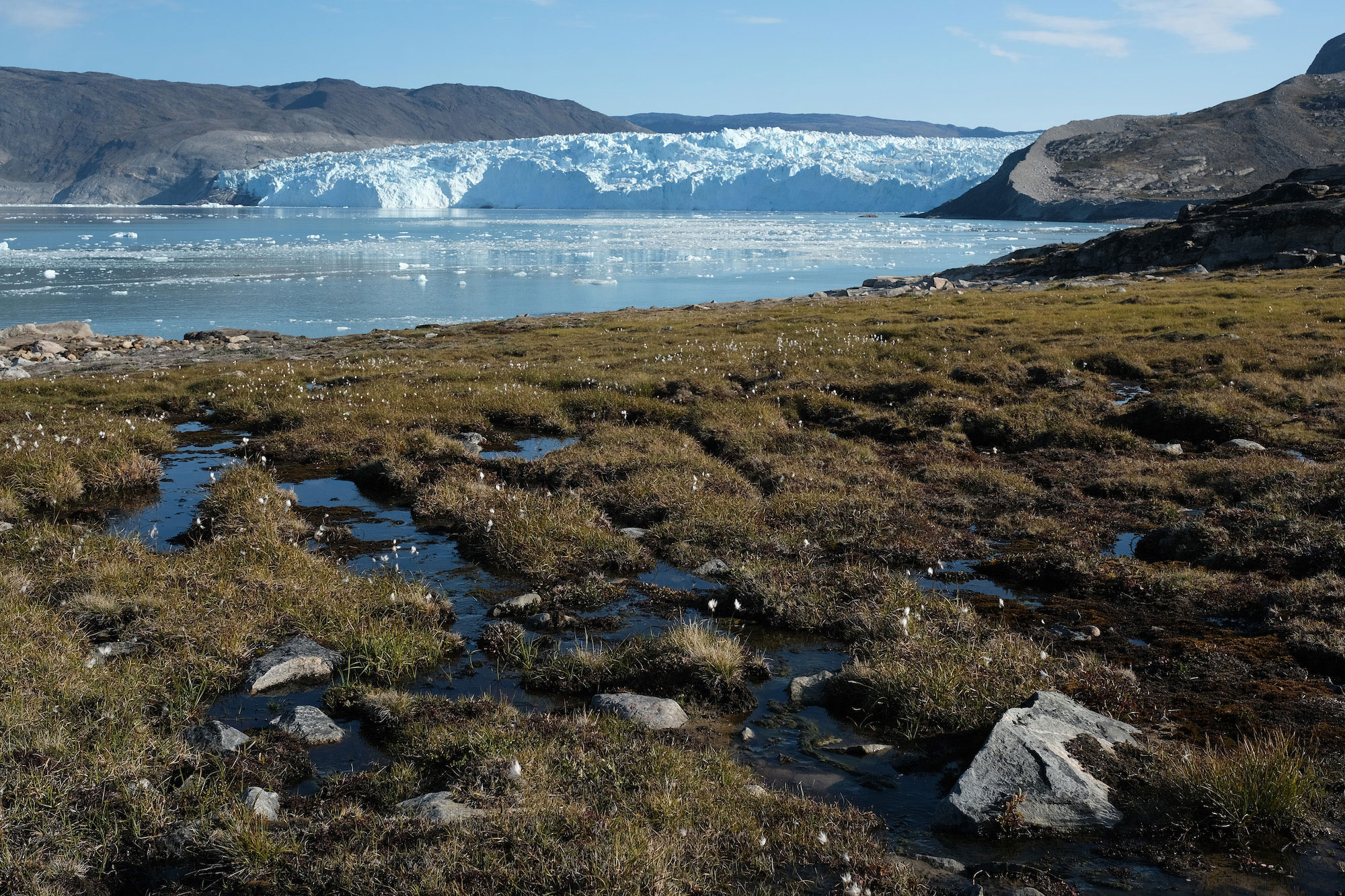
Sean Gallup / Getty Images
In 2019, Brendan Rogers stumbled into an open wound of our warming planet. He was doing ecological fieldwork in the Alaskan tundra, during a summer so hot that he recalls people walking around in shorts and t-shirts. As he was about to set up a piece of equipment, the ground beneath his feet gave way, sending him falling into an empty crater.
Rogers had just walked into what scientists call a thermokarst feature. They’re “landscape sloughs and slides, features all over the permafrost zone where the ground literally collapses.” Formed by rapid melt, they are the fingerprints of a process taking place throughout the Arctic: permafrost thaw. Permafrost is ancient Arctic soil that usually stays frozen year-round (hence the “perma”).
Historically, vast stores of permafrost in the northern Arctic regions of Alaska, Siberia, Canada, and Greenland have contributed to the Earth’s carbon sink, taking in more carbon than they emit every year, thanks to the growth of carbon-eating lichens and mosses on the surface. But the effects of thaw might already have flipped the permafrost region from carbon sink to source. An international team of scientists estimated that during each winter from 2003 to 2017, Arctic permafrost regions lost 1.7 billion metric tons of carbon, while only storing an average of 1 billion metric tons of carbon each summer.
The National Oceanic and Atmospheric Administration’s Arctic Report Card for 2019 found that the permafrost region has already started to lose more carbon than it captures — causing a net 300 to 600 million metric tons of carbon to be released into the atmosphere each year. (That’s more than five times the emissions New York City generates in a year.) The data collected for the report card “has convinced me that this feedback has already started,” says Ted Schuur, one of the report card’s authors and a climate scientist at Northern Arizona University.
Over the next 300 years, worst-case scenario models predict that 208 billion metric tons of carbon could be released through gradual permafrost thaw, about 15 percent of what is currently stored. But it could also take place abruptly; sudden thaw in features like lakes, wetlands, and hills, which produce formations like the crater Rogers fell into, might lead to an additional 60 to 100 billion metric tons of CO2 emissions. That doesn’t take into account more intense wildfires, which combust the carbon stored in permafrost soils and accelerate thaw. All these processes feed into an accelerating feedback loop triggering more warming and more permafrost loss.
One reason the loss of so much permafrost is so concerning to scientists is that it’s irreversible. The carbon buried across the Arctic tundra took millennia to accumulate. Once it’s gone, Lenton says, there’s no getting it back.
Boreal forest
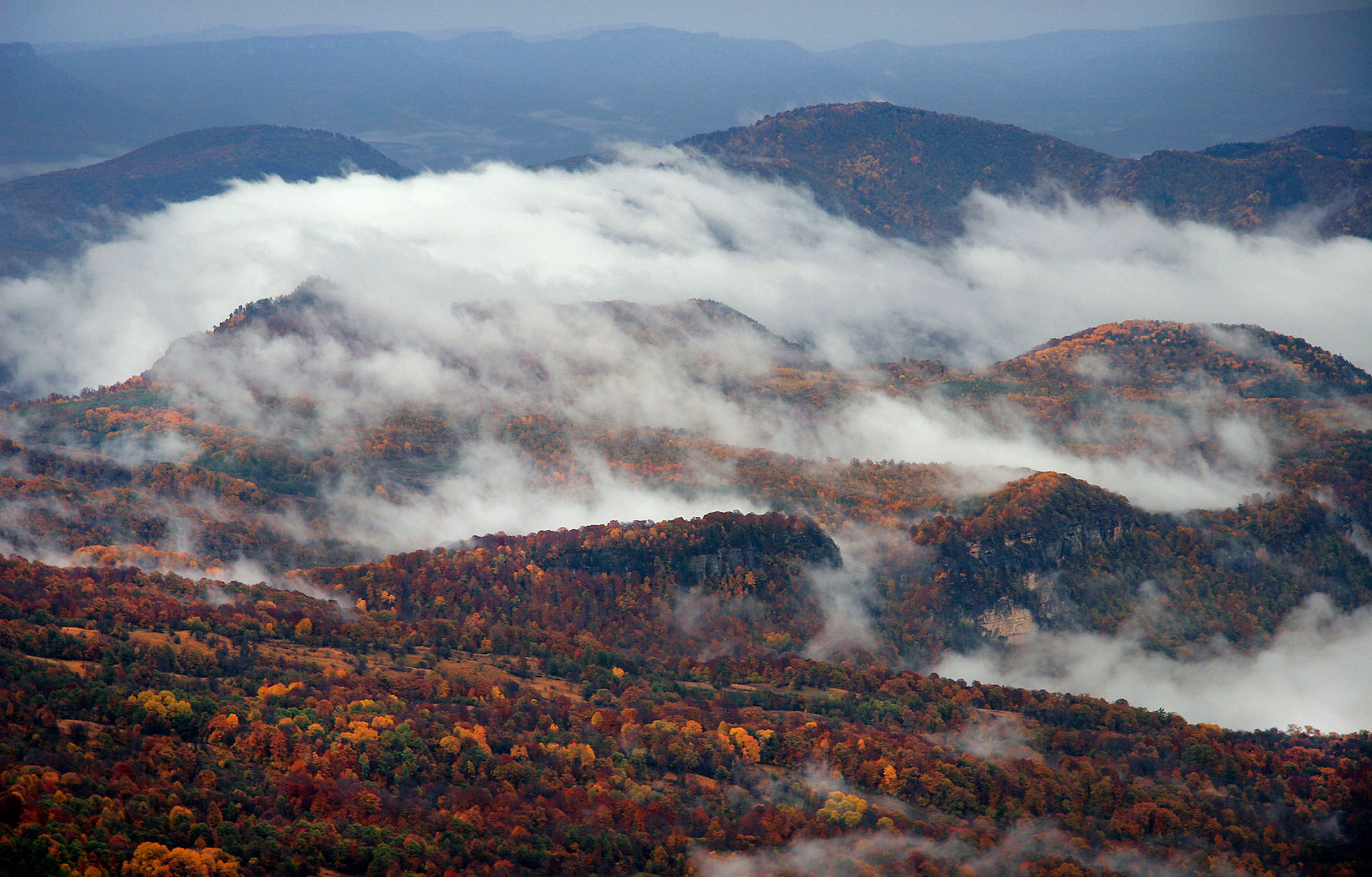
Vladimir Savchenko / USAID

In the summer of 2014, the normally bright midday skies of Canada’s Northwest Territories turned pitch black. After blood-red sun and weeks of thick smoke, Jennifer Baltzer watched as ash rained down over the little town of Yellowknife, where she lived and worked researching boreal forest ecosystems — a band of coniferous forest that circles the globe, right below the Arctic. That year hosted a particularly devastating wildfire season — the one road to Yellowknife was closed for three weeks, with no food coming in or out. For days, a huge cloud of smoke hung across the lake near where her family lived.
As Baltzer watched the forest burn from her home, with her kids sheltered inside, she was aware she was living in a region that is being reshaped by climate change. “The air quality was so bad that we couldn’t take the kids outside,” she recalls. “It was really hard to be outside. You actually felt physically ill.”
The boreal forest spans 1.5 billion acres around the planet, more than half the area of Europe, spread across northern Russia and Canada. It’s also the largest carbon storage reservoir on land, containing 30 to 40 percent of all carbon sequestered on land, and takes up slightly more carbon than it emits every year. Some of this carbon is kept above ground, in the trees, but a large chunk is invisible to the naked eye — about 85 percent of it is locked away in cold, wet soils. Over time, moss and slowly decomposing vegetation form layers of carbon-rich soil known as peat. In some regions where it’s cold enough, the peat is largely permafrost.
But the boreal forests are changing. Fire is part of the natural rhythm of boreal forests, and many tree species within them are adapted to it. But as conditions become warmer and drier, wildfires are happening more frequently and burning over greater areas, threatening the vast reserves of carbon stored in the soils of the boreal region and potentially transforming the forest into grassland or tundra.
The 2014 wildfires in the Northwest Territories that Baltzer lived through burned 8.6 million acres of boreal forest that season alone (compared to the usual average of 1.5 million acres), releasing 94 million metric tons of CO2. The trend has only continued — the summer of 2020 was a record year for wildfires in Siberia, with 26.9 million acres of forest torched as temperatures reached over 100 degrees F in parts of the Arctic. As wildfires accelerate, researchers fear that carbon emissions from the fires could threaten the region’s ability to store more carbon than it emits — and eventually, flip it to a source of carbon emissions.

The winter following the 2014 blazes, some fires were still smoldering in the soil, and Baltzer could see them popping up occasionally through the snow – a phenomenon known as “zombie fires.” Her team studied the impacts of that wildfire season on carbon that had previously accumulated in soils, known as “legacy carbon.” It found that the 2014 wildfires burned older and deeper carbon reserves, releasing them into the atmosphere.
That’s one part of how the tipping point works in the boreal forest: As the climate warms, wildfires intensify, releasing more carbon, further accelerating warming, Baltzer explains. That’s not the only feedback at play. As fires return more frequently, forests might fail to recover and slowly morph into grassland or tundra, reducing the amount of carbon stored aboveground. And as warming lures pests like bark beetles northward, it also threatens the well-being of the forests and the release of the carbon stored within them — another potential reinforcing loop.
There are other feedbacks, however, that could help stabilize the system. A study charting the regrowth of Alaskan forests following wildfires found that tree species in the region shifted from black spruce to deciduous trees — allowing the regenerated forests to store even more carbon than the old versions. That transition could mean that over time, the carbon impacts of forest fires could be less severe than previously believed. Baltzer says that similar transitions after fire could be taking place across the North American boreal region. These findings, she explains, “point to broader resilience of that particular function of the system.”
Understanding how these different feedbacks might shape the future of the boreal forest and its vast reserve of carbon is a massive scientific undertaking. Scott Goetz is the leader of NASA’s Arctic-Boreal Vulnerability Experiment, a group of scientists keeping tabs on the vital signs of the region, monitoring, among other things, shifts in how the forests are storing and releasing carbon. His team uses field measurements, data from aircraft flown over the forest, and satellites to paint a picture of how much carbon boreal forests take up and releases every year. Those measurements then inform models of the region’s future.
Goetz says that in many ways the multiple feedbacks at play make predicting what will happen “a hellishly complicated problem.” Because of this, Goetz says he doesn’t have a clear answer about if, when, and how fast the system could cross a tipping threshold. “I don’t think we actually know.”
Amazon rainforest
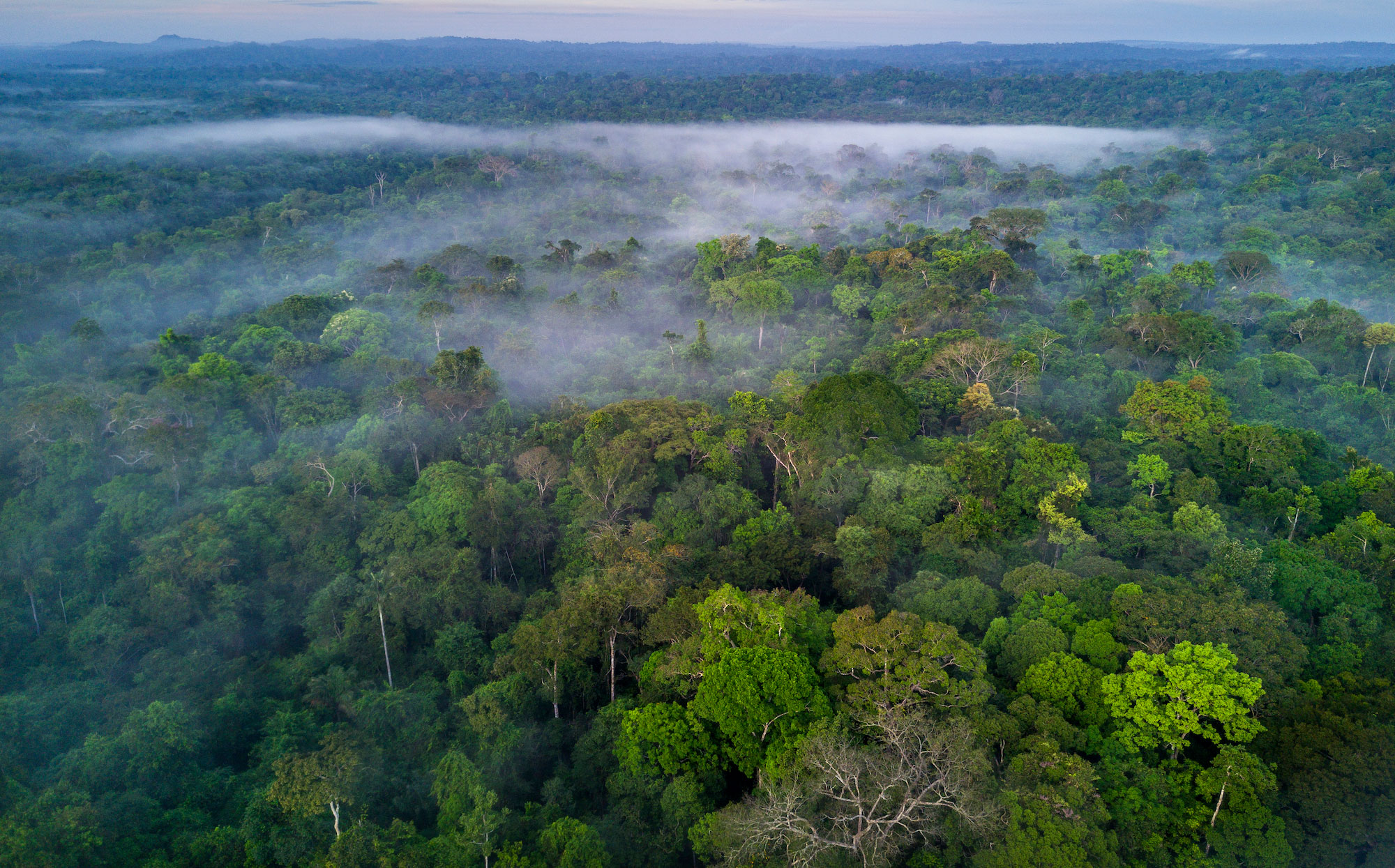
Ignacio Palacios / Getty Images
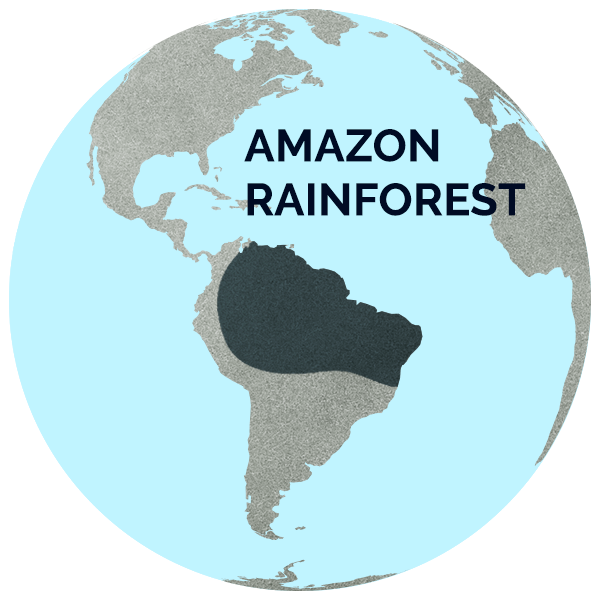
David Lapola has worked in the Amazon rainforest for many years, but September of 2015 sticks out in his memory. He was teaching a field course at a research station some 40 miles north of Manaus, in the center of the Amazon basin. That month was extremely hot and dry, and Lapola noticed how it had sucked the moisture out of the forest. He recalls that the top 20 inches or so of the soil was bone dry — and this was in the central Amazon, the world’s largest rainforest, which normally gets almost 10 feet of rain every year.
“I’ve never seen it like that, neither before nor later on,” Lapola says. “I remember seedlings drying out and dying, small saplings getting drier, the leaves browning.”
Lapola was witnessing first-hand the impacts of a devastating El Niño — a naturally occurring climate pattern, worsened by global warming, that brought unusually dry and hot conditions to the Amazon that year. El Niño-fueled droughts kill trees and suppress growth across the Amazon. Dead trees then release the carbon stored within them, and decreased tree growth means less carbon stored across the system as a whole. The result: The 2015 El Niño drought temporarily turned rainforests from carbon sinks into carbon sources, adding about 2.5 billion tons of carbon to the atmosphere.
That could be a preview of what’s to come. The Amazon rainforest, known commonly as the lungs of the world, holds an estimated 150 to 200 billion metric tons of carbon in its vast reserves of tree and plant mass. Historically, it has represented around a quarter of the world’s terrestrial carbon sink. But the Amazon, like so many other places on Earth, is getting hotter and drier. Over the past century, the temperature in the region has risen by 1 to 1.5 degrees C (1.8 to 2.7 degrees F), and in some places, the dry season has lengthened from four to nearly five months.
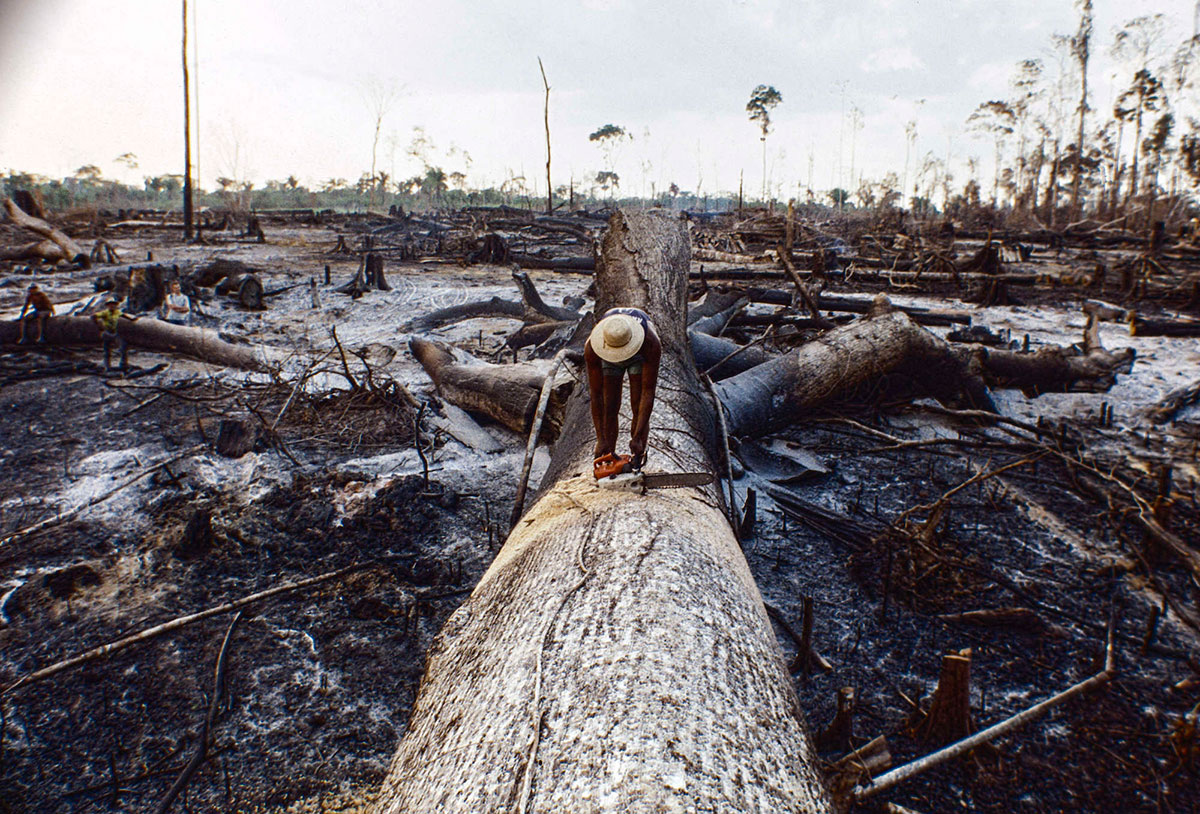
Ricardo Funari / Brazil Photos / LightRocket via Getty Images
All this has affected what Lapola calls tree demography — how long trees live, their mortality rates, and the growth of new trees. Though higher levels of CO2 in the atmosphere have caused tropical trees to take up more of the greenhouse gas through photosynthesis, an effect known as “carbon fertilization,” the Amazon carbon sink declined by a third from 2005 to 2015 when compared to the 1990s, mostly a result of increased tree mortality, and a fifth now acts as a carbon source. Now, some models predict that the Amazon will become a permanent source of carbon emissions by 2035, further contributing to climate change.
Climate change isn’t the only factor that might push the Amazon toward a tipping point; deforestation also plays a role. Cattle ranchers and farmers have been cutting down large swaths of the rainforest, carving out a portion roughly the size of Connecticut last year. Much of the moisture in the Amazon comes from the trees themselves. They suck up water from the soil through their trunks — like liquid through a straw — and exhale it into the atmosphere through little pores on the undersides of leaves in a process known as transpiration. Transpiration cools the rainforest and produces rainfall. So if the forest is cut down, the surrounding area dries out.
In 2018, Thomas Lovejoy, an environmental scientist at George Mason University in Virginia, and Carlos Nobre, a senior scientist at the Institute of Advanced Studies at the University of São Paulo in Brazil, raised the alarm, estimating that if 20 to 25 percent is deforested, a tipping threshold may be crossed, transforming the Amazon into a savanna. That’s an alarming estimate, given that 15 to 17 percent of the Amazon has already disappeared, with Brazil under nationalist leader Jair Bolsonaro leading tropical forest losses worldwide in 2019. The country led the world in losing tropical forest again in 2020. Lapola says that in the Amazon, “deforestation comes together with global climate” and threatens to push the region past a dangerous tipping point, a risk not just for the health of the rainforest but for the whole planet.
This post was originally published on Radio Free.

